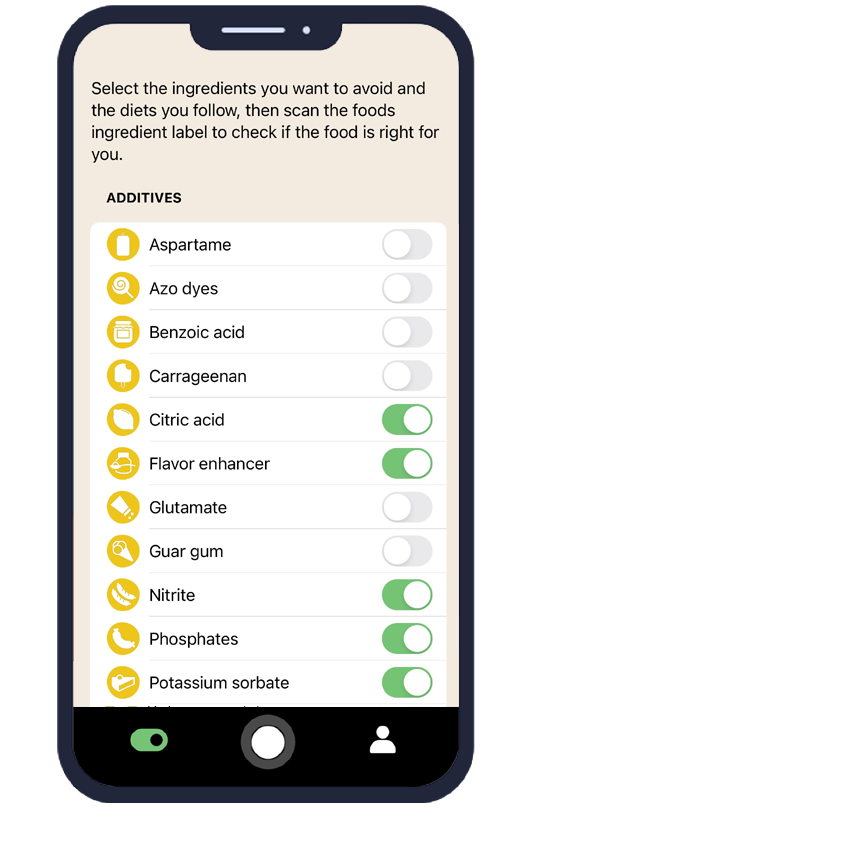Everything You Need to Know About Flavor Enhancer and How AI Eat This Can Help
Flavor enhancer is a common food additive that amplifies the taste of processed foods, making them more appealing to consumers. For individuals with dietary restrictions, food allergies, or health concerns, identifying flavor enhancer in ingredient lists can be challenging and time-consuming. The AI Eat This mobile app revolutionizes this process by instantly scanning ingredient lists in any language, helping users make informed food choices and avoid unwanted additives like flavor enhancer.
Understanding what flavor enhancer is and where it's found is crucial for maintaining a healthy diet and managing specific dietary needs. Whether you're dealing with food sensitivities or simply want to avoid certain additives, having the right tools makes all the difference in your food selection process.
What Is Flavor Enhancer and Where Is It Used?
Flavor enhancer refers to a category of food additives designed to intensify or modify the taste of food products without adding their own distinct flavor. The most common flavor enhancer is monosodium glutamate (MSG), identified by the E-number E621, though many other compounds fall under this category. These additives work by stimulating taste receptors, particularly those sensitive to umami, the fifth basic taste.
Food manufacturers widely use flavor enhancer in processed and packaged foods to make products more palatable and appealing to consumers. The additive helps mask any off-flavors that may develop during processing while enhancing the overall taste experience.
Common Foods Containing Flavor Enhancer
Flavor enhancer appears in numerous everyday food products, making it important to recognize where it's commonly used:
- Snack foods like chips, crackers, and flavored nuts
- Instant soups, broths, and bouillon cubes
- Processed meats including sausages, deli meats, and canned products
- Frozen meals and ready-to-eat dinners
- Seasoning blends, sauces, and salad dressings
- Asian cuisine products and restaurant dishes
- Canned vegetables and processed cheese products
Is Flavor Enhancer Safe? What Does the Research Say?
The safety of flavor enhancer has been extensively studied by major health authorities worldwide. The U.S. Food and Drug Administration (FDA) classifies MSG and other common flavor enhancers as "Generally Recognized as Safe" (GRAS) for consumption by the general population.
The European Food Safety Authority (EFSA) has also conducted comprehensive reviews and established acceptable daily intake levels for various flavor enhancers. Similarly, the World Health Organization supports the safety of these additives when consumed within recommended limits.
Addressing Common Misconceptions
Despite regulatory approval, some individuals report sensitivity to flavor enhancer, experiencing symptoms like headaches or nausea. However, controlled scientific studies have not consistently demonstrated a causal relationship between flavor enhancer consumption and these symptoms in the general population.
The key to flavor enhancer safety lies in moderation and individual tolerance levels. Most people can consume these additives without adverse effects when they're part of a balanced diet.
Who Should Consider Avoiding Flavor Enhancer?
While flavor enhancer is generally safe for most people, certain individuals may benefit from limiting or avoiding these additives. People with diagnosed flavor enhancer intolerance may experience symptoms like headaches, flushing, or digestive discomfort after consumption.
Individuals following specific dietary restrictions, such as those on whole food diets or avoiding processed foods, often choose to eliminate flavor enhancer from their meals. Some people with migraine triggers also report sensitivity to certain flavor enhancers.
Parents concerned about their children's diet may prefer to limit processed foods containing these additives, opting instead for fresh, whole ingredients. Those managing sodium intake should also be aware that some flavor enhancers contribute to overall sodium consumption.
How AI Eat This Helps You Avoid Flavor Enhancer
The AI Eat This app transforms the way consumers identify flavor enhancer in food products. Using advanced artificial intelligence and image recognition technology, the app instantly scans ingredient lists through your smartphone camera, identifying flavor enhancer and other additives in seconds.
Users can set personalized dietary filters within the app, automatically flagging products containing flavor enhancer or other unwanted ingredients. This feature is particularly valuable for people with dietary restrictions who need to quickly assess multiple products while shopping.
The app works with ingredient lists in any language, making it invaluable for travelers or those shopping for international food products. Whether you're reading English, Spanish, French, or any other language, AI Eat This accurately identifies flavor enhancer and provides clear warnings.
Key Features for Flavor Enhancer Detection
AI Eat This offers several features specifically designed to help users avoid flavor enhancer:
- Instant ingredient scanning and identification
- Customizable alerts for flavor enhancer detection
- Multi-language support for global food products
- Detailed information about detected additives
- Personal dietary profile creation and management
Tips for Maintaining a Flavor Enhancer-Free Diet
Successfully avoiding flavor enhancer requires a combination of smart shopping strategies and the right tools. Start by focusing on whole, unprocessed foods like fresh fruits, vegetables, lean meats, and whole grains, which naturally don't contain these additives.
When shopping for packaged foods, always read ingredient lists carefully. Look for terms like "monosodium glutamate," "MSG," "hydrolyzed protein," "autolyzed yeast," and various E-numbers (E621-E625) that indicate the presence of flavor enhancer.
Choose products labeled as "no MSG added" or "no artificial flavors," though remember that naturally occurring glutamates may still be present. Cook more meals at home using fresh ingredients, which gives you complete control over what goes into your food.
Use the American Heart Association's guidelines for reading nutrition labels to make informed choices. When dining out, don't hesitate to ask restaurant staff about flavor enhancer use in their dishes, especially at establishments serving Asian cuisine where these additives are commonly used.
The Future of Food Additive Awareness
As consumers become more health-conscious and aware of food additives, the demand for transparency in food labeling continues to grow. Technology like AI Eat This represents the future of personalized nutrition, empowering individuals to make informed decisions about their dietary restrictions and food choices.
The app's ability to instantly identify flavor enhancer and other additives democratizes access to nutritional information, regardless of language barriers or complex ingredient names. This technological advancement supports the growing movement toward cleaner eating and more conscious food consumption.
Conclusion
Understanding flavor enhancer and its presence in food products is essential for anyone managing dietary restrictions or seeking to avoid certain food additives. While these additives are generally recognized as safe by major health authorities, individual sensitivities and personal preferences may warrant avoidance.
The AI Eat This app provides an innovative solution for identifying flavor enhancer in food products, making it easier than ever to maintain your desired diet. With its advanced scanning technology and personalized filtering options, the app empowers users to make informed food choices quickly and confidently.
Take control of your dietary choices today. Download AI Eat This for free testing today! and experience how technology can simplify your journey toward healthier eating and better management of your dietary restrictions.

70 filters
With over 70 filters, you can easily avoid certain ingredients and follow your dietary preference.

Paleo

Pescetarian

Ultra-processed food

Vegan







































































